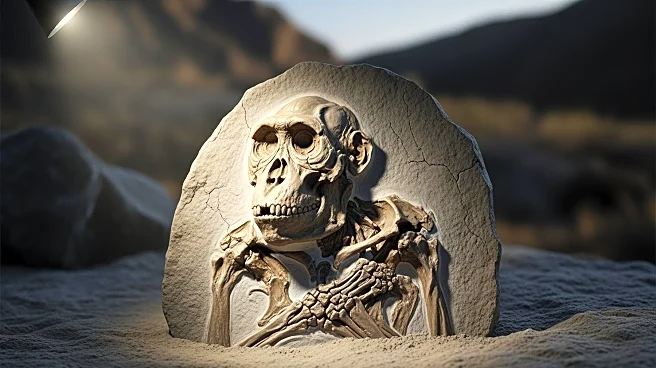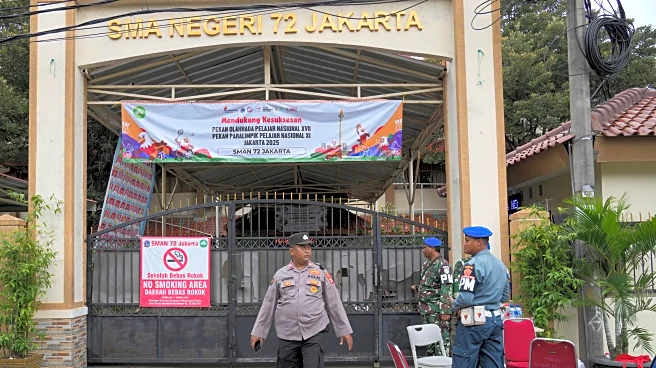What's Happening?
Archaeologists are investigating how humans survived the Toba supereruption, one of Earth's largest volcanic events, which occurred 74,000 years ago in present-day Indonesia. The eruption released approximately
672 cubic miles of volcanic ash into the atmosphere, leading to global cooling and environmental devastation. Despite the catastrophic conditions, evidence from archaeological sites in South Africa and Ethiopia suggests that humans adapted and thrived post-eruption. Innovations such as bow-and-arrow technology and changes in subsistence strategies helped humans endure the harsh conditions. This research challenges the Toba catastrophe hypothesis, which posited that the eruption caused a significant reduction in human population size.
Why It's Important?
Understanding human resilience in the face of natural disasters like the Toba supereruption provides valuable insights into human adaptability and survival strategies. This knowledge is crucial for modern hazard planning and disaster preparedness, as it highlights the importance of innovation and adaptability in overcoming environmental challenges. The study of past events can inform current efforts by organizations such as the USGS Volcanic Hazards Program, which monitors active volcanoes to mitigate potential risks. The findings also contribute to the ongoing debate about the factors that led to historical population bottlenecks, offering a nuanced perspective on human evolution and survival.
What's Next?
Future research will continue to explore the impact of the Toba supereruption on human populations, focusing on genetic evidence and archaeological records to better understand the extent of the event's effects. Scientists aim to refine the timeline of human adaptation and identify specific strategies that facilitated survival. Additionally, advancements in volcanic monitoring and hazard preparedness will be informed by these historical insights, enhancing global readiness for potential future eruptions. Collaboration between archaeologists, geneticists, and climate scientists will be key in piecing together the complex narrative of human resilience.
Beyond the Headlines
The study of the Toba supereruption underscores the ethical responsibility to prepare for natural disasters, emphasizing the need for comprehensive hazard planning and community education. It also highlights the cultural significance of technological innovation in human history, illustrating how adaptability has been a defining characteristic of human evolution. Long-term, this research may influence public policy regarding disaster management and environmental conservation, promoting sustainable practices that prioritize human and ecological well-being.













